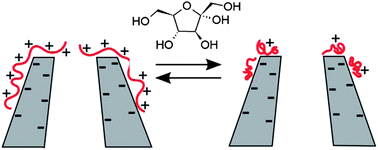Carbohydrate-actuated nanofluidic diode: switchable current rectification in a nanopipette†
Abstract
Nanofluidic structures share many properties with

* Corresponding authors
a
Department of Biomolecular Engineering, Baskin School of Engineering at University of California Santa Cruz, 1156 High Street, Santa Cruz, CA 95064, USA
E-mail:
pourmand@soe.ucsc.edu
b Department of Chemistry and Biochemistry, University of California Santa Cruz, 1156 High Street, Santa Cruz, CA 95064, USA
Nanofluidic structures share many properties with

 Please wait while we load your content...
Something went wrong. Try again?
Please wait while we load your content...
Something went wrong. Try again?
B. Vilozny, A. L. Wollenberg, P. Actis, D. Hwang, B. Singaram and N. Pourmand, Nanoscale, 2013, 5, 9214 DOI: 10.1039/C3NR02105J
To request permission to reproduce material from this article, please go to the Copyright Clearance Center request page.
If you are an author contributing to an RSC publication, you do not need to request permission provided correct acknowledgement is given.
If you are the author of this article, you do not need to request permission to reproduce figures and diagrams provided correct acknowledgement is given. If you want to reproduce the whole article in a third-party publication (excluding your thesis/dissertation for which permission is not required) please go to the Copyright Clearance Center request page.
Read more about how to correctly acknowledge RSC content.
 Fetching data from CrossRef.
Fetching data from CrossRef.
This may take some time to load.
Loading related content
